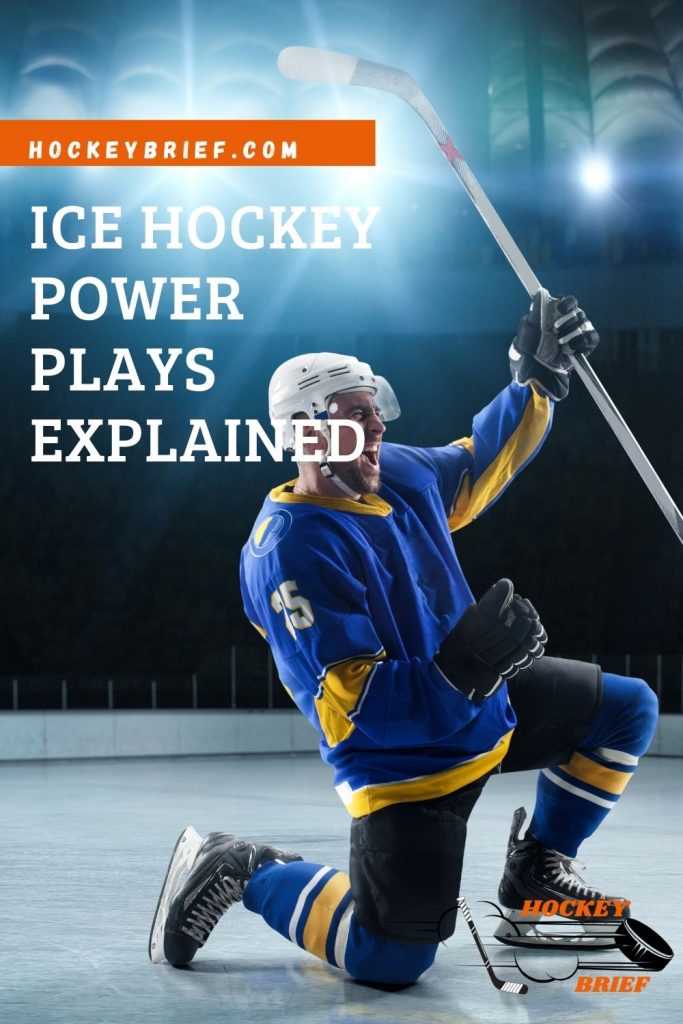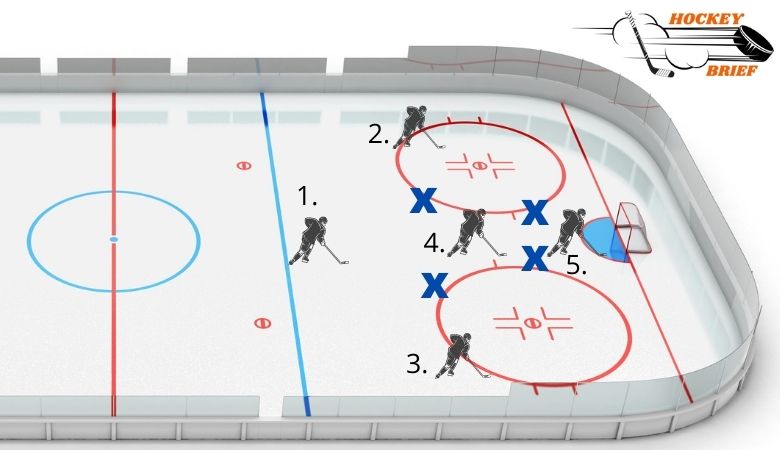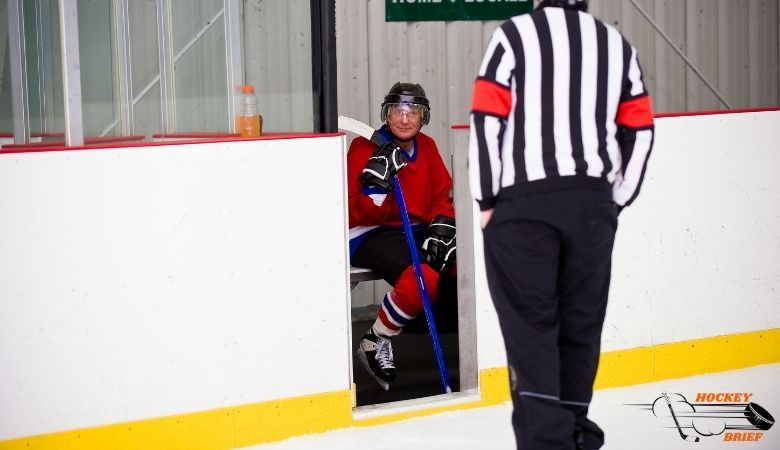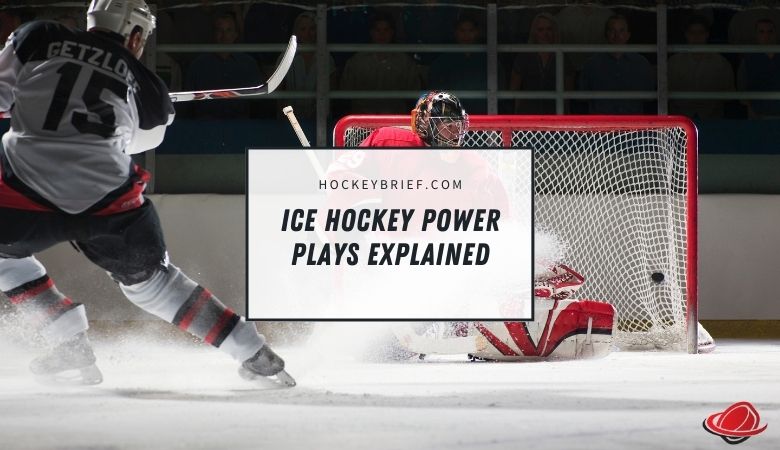One of the most important parts of the game of hockey is when one team has the advantage of being on a power play.
In order for a team to take advantage of a power play, a lot of planning and practice needs to take place.
This article will help you understand the basics of a power play and the strategies used by many hockey teams to be successful.

So what is a power play?
A powerplay is a critical part of the game where one team has the advantage of having more players on the ice than the other team.
This is usually due to a penalty being called on a player who then sits in the penalty box for 2 minutes or more.
Instead of the normal rule of 5 skaters per team in even-strength play, the team who commits the penalty must play with one less player.
This gives the other team an advantage of having a 5-4 advantage of players on the ice.
If 2 players are charged with a penalty, then the opposing team will have a 5-3 advantage in players on the ice.
It is also possible for one team to have a 4-3 player advantage.
A team can not lose more than 2 players on the ice due to a penalty. There will always be 3 players plus a goalie on the ice when killing a penalty.
Power play strategies
When forming a good strategy for playing on a power play, not all teams are the same. Some teams will choose to use 4 forwards and 1 defenceman instead of the normal 3 forwards and 2 defencemen used during even-strength play.
Depending on the status of the game being played, a team may choose to use 5 forwards and no defenceman.
There are several different ways to set up a power play. With having a one-player advantage over the other team, it will be easier to set up control of the puck in the offensive zone.
The idea is to set up a play that will give you the best chance to score a goal. One of the most common strategies is to use a 1-3-1 setup.
The 1-3-1 strategy consists of 4 forwards and 1 defenseman. 1 player will be in front of the net, distracting the goalie, providing a screen, and deflecting any shots that come their way.
A second player will be placed in the “slot”, 2 players placed on the far sides of the ice, normally the wingers, and the defenceman close to the blue line.
The defending and short-handed team will have tier players normally set up a box formation in an attempt to minimize the offense from a power play. So the team on the power play will set up their strategy around that system of defense.
Using the 1-3-1 is effective in keeping control of the puck and setting up the best opportunities to score a goal.
Here is a diagram explaining the power play setup strategy. The blue-colored X refers to the defending team’s players’ box formation and positions.
1-3-1 Power play setup

Player #1 – Defenceman
Players #2 and #3 – Wingers
Player #4 – Player in the slot area or “bumper”
Player #5 – Player in front of the net
The players in this formation are interchangeable. For example, if the defenceman chases the puck on the side boards, one of the wingers will drop back to take their place.
An advantage to having the player in the slot area is the defense will need to defend against the player there resulting in the perimeter being open for puck movement.
Players #1, 2, and 3 can freely pass the puck around to each other creating more scoring chances.
How long does a power-play last?
A penalty against a player will either be a 2 minute minor or a 5-minute major depending on the infraction called by the referee.
The power play will last until either one of the following 3 items take place.
- The penalty time expires.
- A goal is scored by the team on the power play.
- The team on the power play takes a penalty.
If a 2-minute penalty is called, the player will be allowed out of the penalty box when the time has expired or a goal is scored. If a 5-minute penalty is called, the player must serve the full 5 minutes regardless if the other team has scored a goal. Multiple goals can be scored on a 5-minute power play.
If 2 players have been penalized creating a 5 on 3 power play, then only 1 player will be allowed out of the box if a goal is scored. The player with the least amount of time left on the penalty will be released from the penalty box.

Can a power-play occur in overtime?
Yes, a power-play can occur in overtime as in regulation play. The rules of overtime state that even-strength play will consist of 3 players on each side instead of the normal 5.
As mentioned above, a team can not have fewer than 3 players on the ice at a time. The biggest difference with a power play in overtime is when a penalty is called, the offending team does not lose a player. You can’t have a 3 on 2 power play. Instead, the team going on the power play will add 1 player to make it a 4 on 3 advantage.
Power play at the end of a period
If a penalty takes place at the end of a period, it will carry over to the next period. For example, if the penalty occurs after the whistle ending the period, the player will start serving the full penalty time at the beginning of the next period.
If the penalty takes place with time remaining in the period, then the remaining time to be served will commence at the start of the following period.
Icing while on a power play
Icing rules are still in play while on a power play. If the team on a power play shoots the puck down the ice past the goal line, icing will be called and they will have a faceoff take place in their own zone.
The team that is shorthanded can not be charged with icing as the main strategy while short-handed is to kill time on the power play. Shooting the puck down the ice is very common while a team is killing off a penalty.
How much advantage does a team have on the power play?
Statistics show that on average a team on the powerplay will score on the power play around 20% of the time. Expect a team to score 1 time for every 5 chances they have.
This number can vary from team to team. For example, according to statmuse.com, during the 2020-2021 NHL regular season, the Edmonton Oilers led the league with a 27.6% power-play percentage. The worst power-play percentage was held by the New York Islanders with only 18.8%.
So as you can see, having several power-play chances throughout the game can have a huge benefit and provide many other scoring chances than even-strength play.

